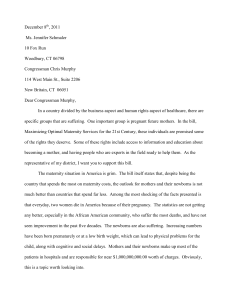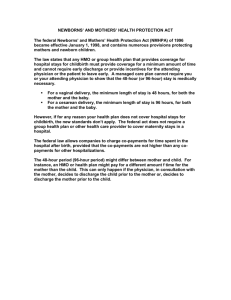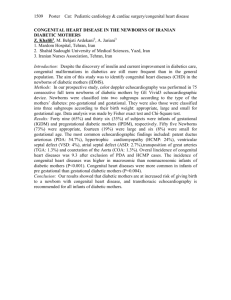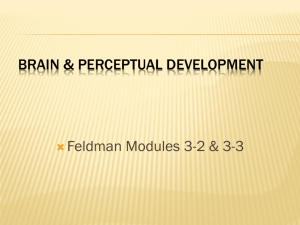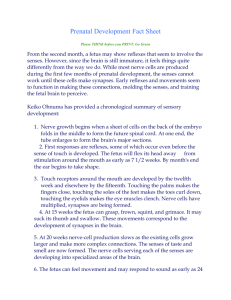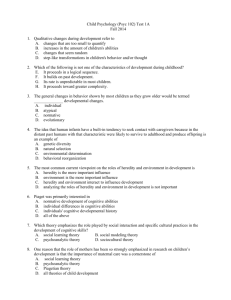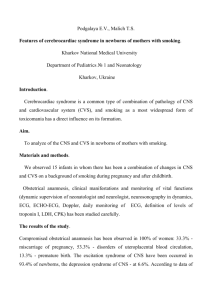Sensory and Perceptual Development
advertisement
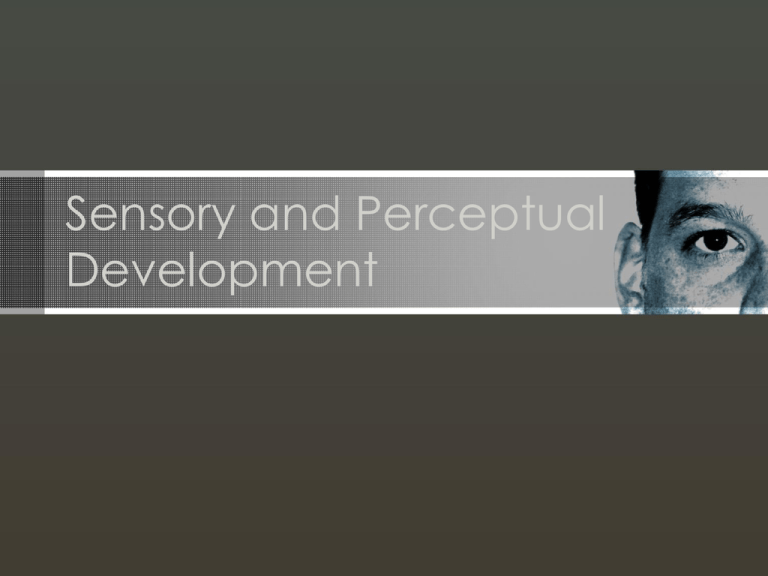
Sensory and Perceptual Development • Sensation: Detection of stimuli by sensory means and transmission of this information to the brain. • Perception: Interpretation of sensory input • All senses present at birth – only have evidence that infants show preferences (and aversions) for taste and smell (and sometimes hearing). these are the two most “dominant senses” at birth. 3 senses • Taste – • Infant can distinguish between sweet, sour, salty, and bitter Smell – Can distinguish at birth (show preference or aversion) After only 6 days they show a preference for mothers smell (learned response) – • Touch – Apparent at birth but the stimulus needs to be stronger than older infants • Sensitive to extremes: pressure, pain, temp. 4th and 5th • Vision (at birth) – – – Focal length: 8-10 inches Very fuzzy image (20/600) Newborns show a preference for high contrast and patterns • – Initially look around the edge of image to develop a unified whole Can only discriminate red and green (not blue). Vision • Limitations – – – – – • At birth eye is only ~70% of adult size Lens (of the eye)- Accommodation is not functioning properly. It is not changing shape as it should. 3 sets of muscles that move the eye Immature neural system Photoreceptors (rods and cones) are not as densely packed at birth Development of Depth Perception – Tested using the “Visual Cliff”. Most 6 month old infants will not crawl to their mothers over the “cliff” Visual Cliff video Audition/Hearing • Audition/hearing – – Begins developing in the fetus Newborns prefer (and recognize) mothers voice • • • @26 weeks fetus begins to hear (auditory system developed) fetus hears moms voice (through the body) It develops hair cells in the inner ear which are in the range of mom’s voicepreferential maturation of hair cells in the chochlea Audition/Hearing • Sounds are muffled – – – – Caused by excess fluid in the ears and the Eustachian tube In adults these tubes are slanted downward and drain These are horizontal in newborns and don’t drain easily, this is why newborns get earaches often. Limitations • • Eustachian tube- smaller (narrower) and horizontal Preferential development to hear sound in female (particularly mothers) voice range

